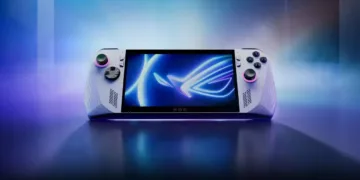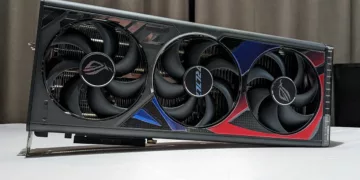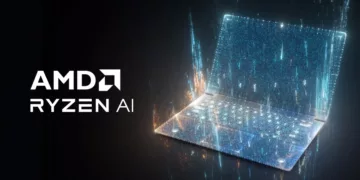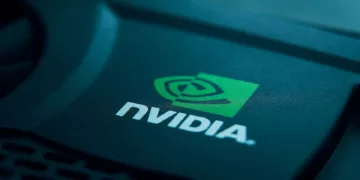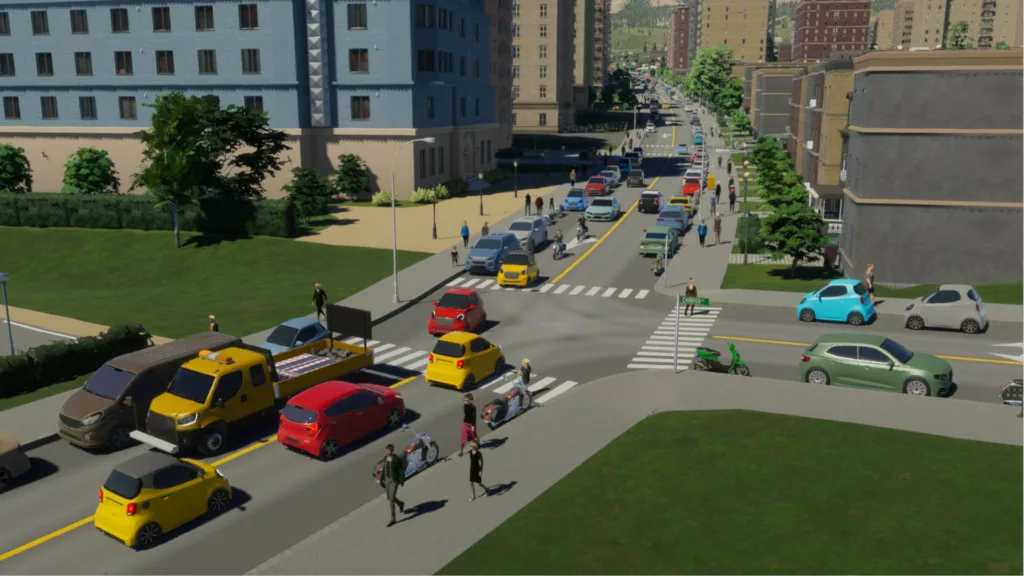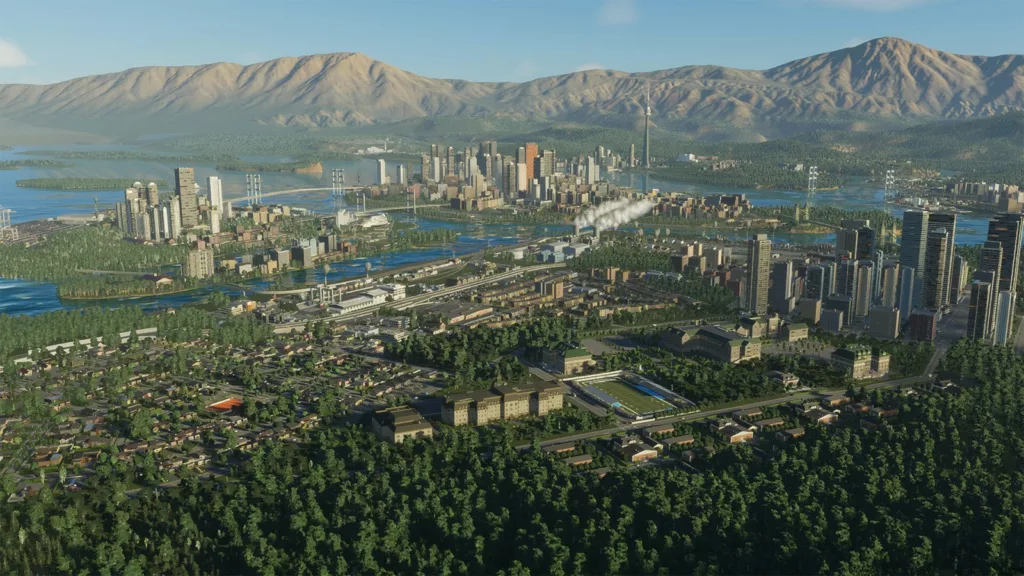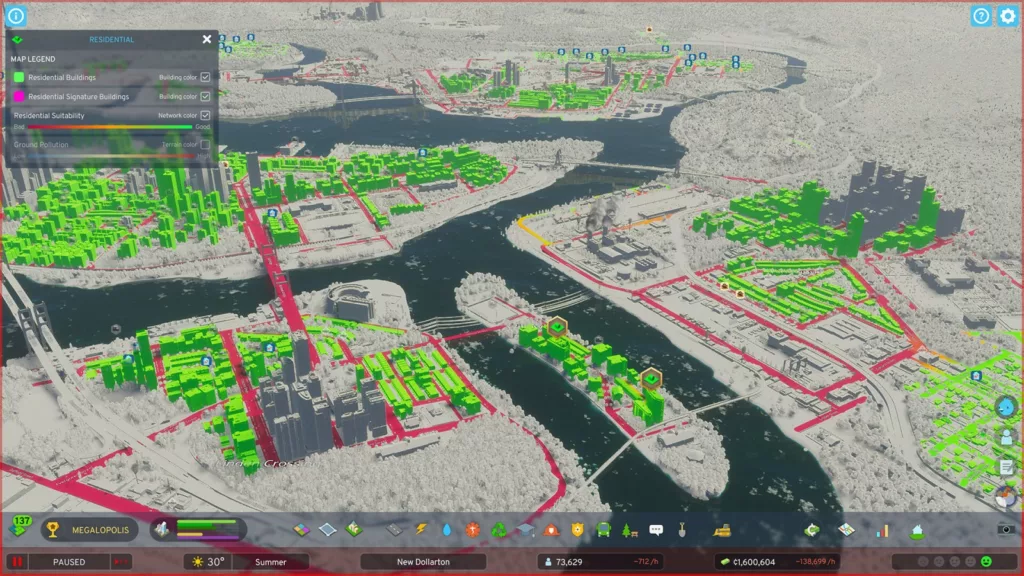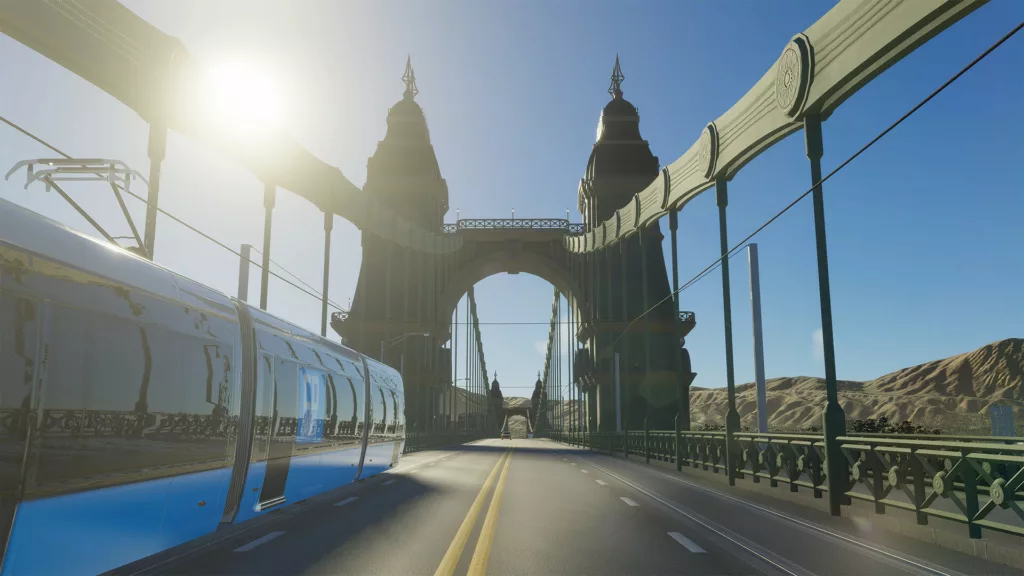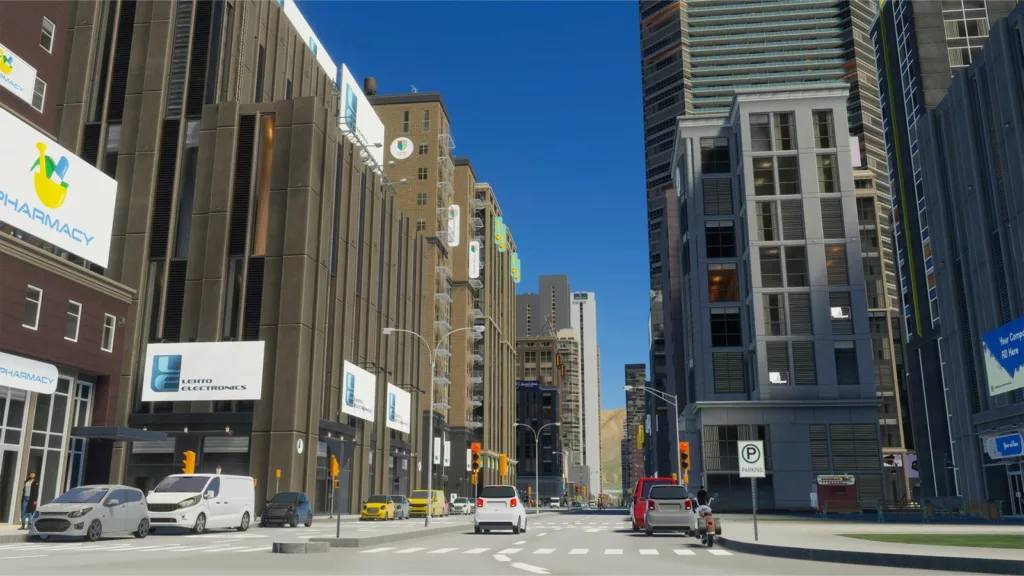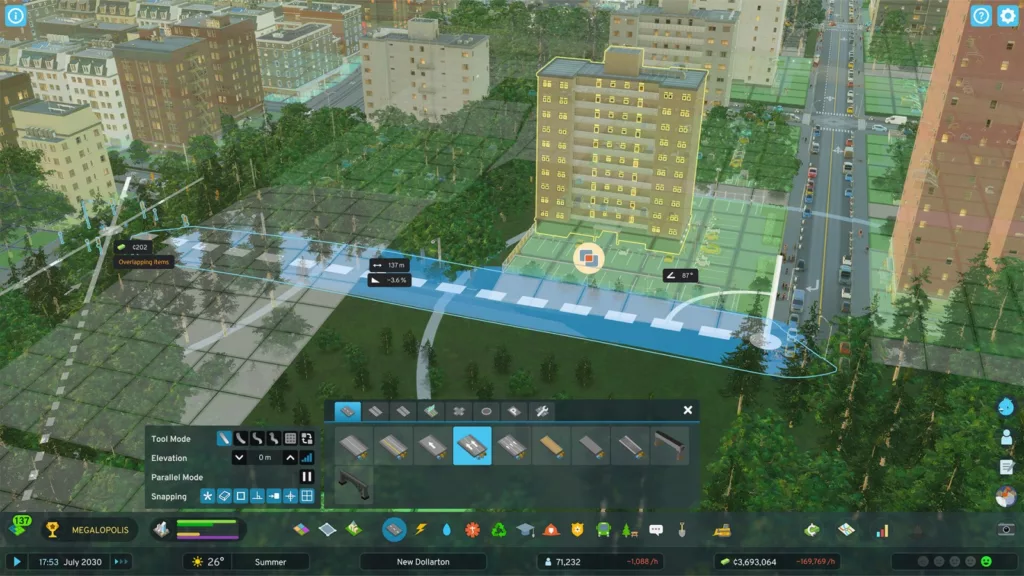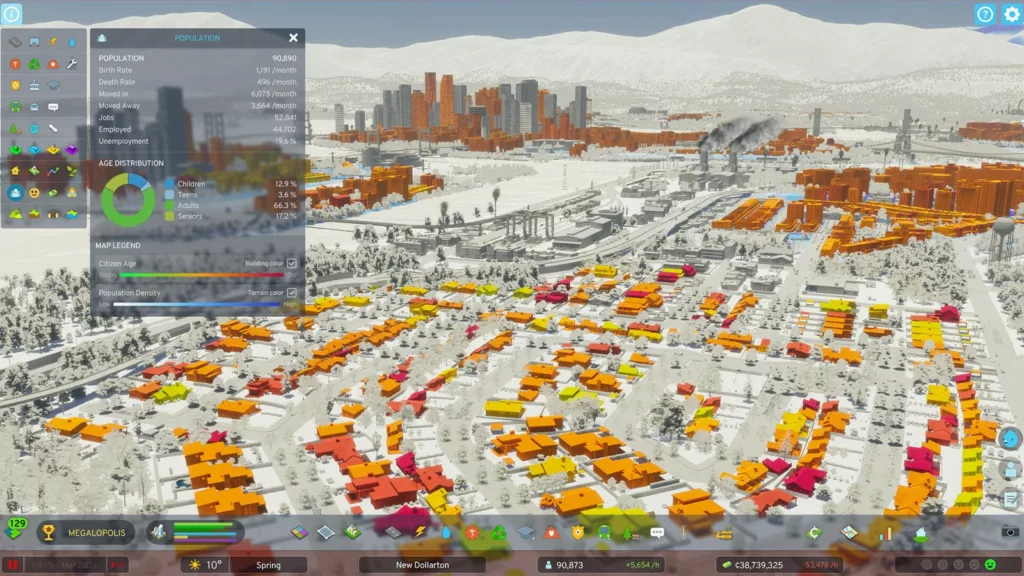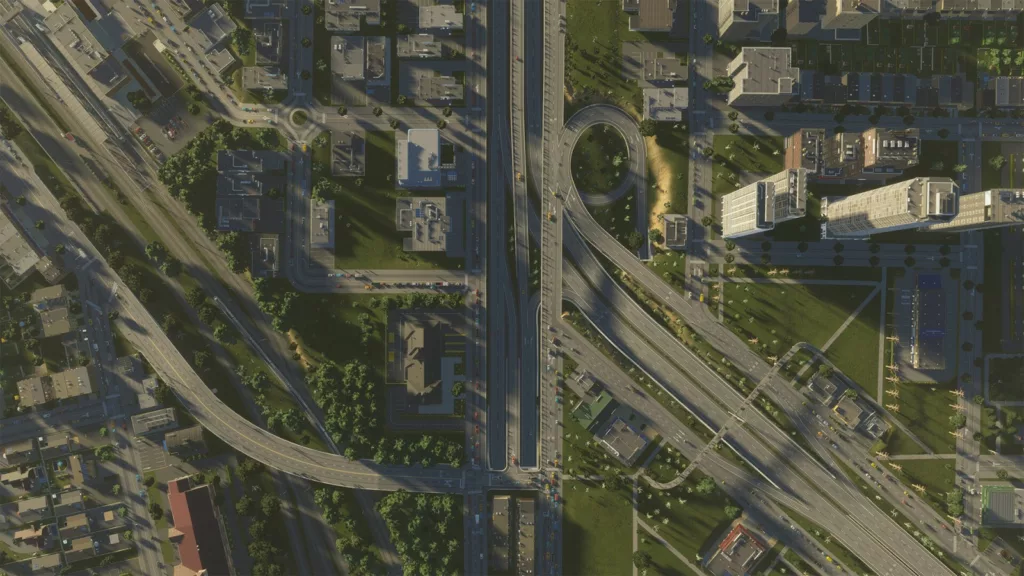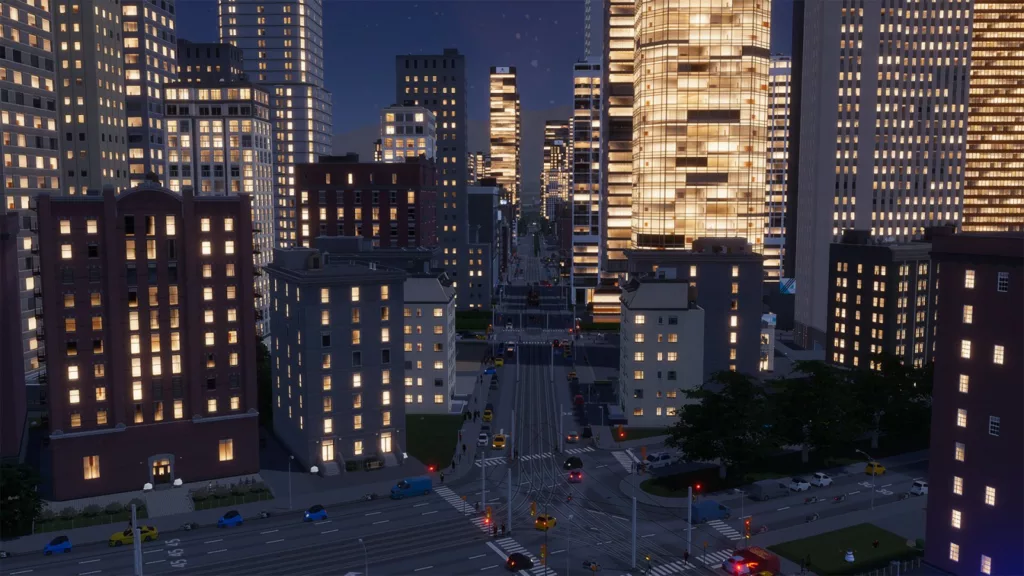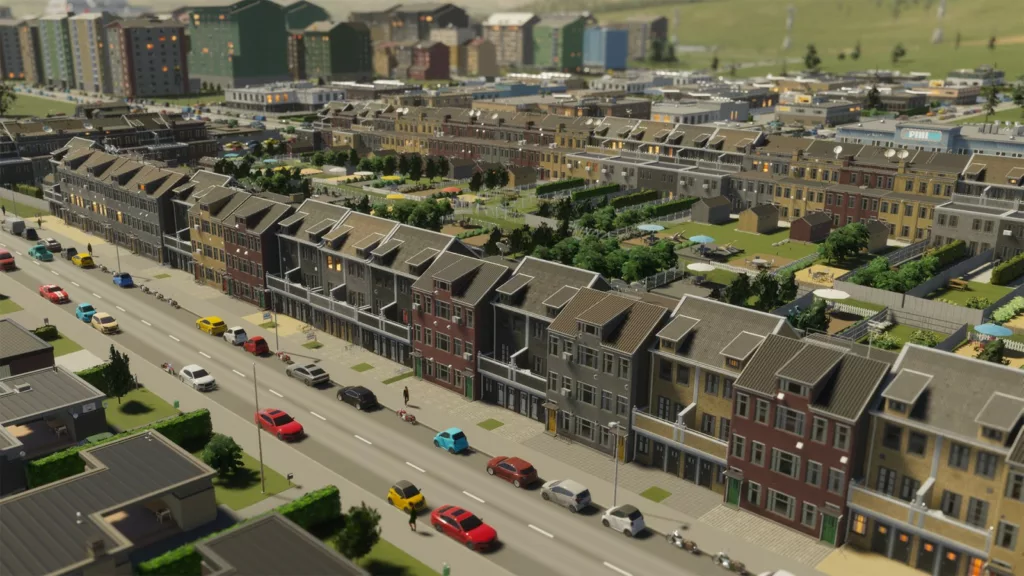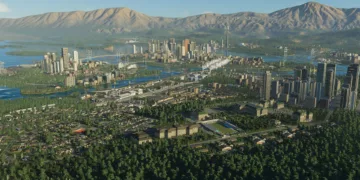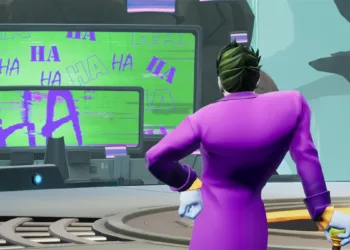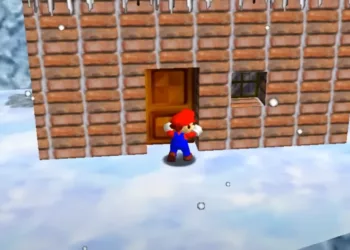Cities: Skylines took the city builder genre by storm when it released in 2015, offering the kind of deep simulation and creative freedom fans had been craving since SimCity’s botched 2013 release. Now, after years of expansions and updates, developer Colossal Order is ready to start fresh with Cities: Skylines 2. Can this sequel live up to the massive expectations set by one of the most acclaimed city management games of all time?
In Cities: Skylines 2, players once again take on the role of all-seeing mayor, building up neighborhoods, commercial districts, and industrial zones from scratch. You’ll need to provide power, water, emergency services, public transit, education, healthcare, and commerce to keep your ever-growing populace happy and prosperous. Balancing municipal budgets, listening to citizen demands, and preventing traffic catastrophes are all in a day’s work. The game promises enhanced economic, transit, education, and pollution simulation systems for even more realism.
With randomly generated maps, extensive building customization, modular construction, and robust mod support, Skylines 2 aims to provide near endless opportunities for creativity and experimentation. And the bright, relaxed visuals retain the welcoming, charming vibe the series is known for. But have these new complexities and quality-of-life improvements enhanced the experience, or do they overcomplicate a winning formula? Read on to see if Cities: Skylines 2 can build on its predecessor’s massive success, or if it leads its fans down a gridlocked highway to disappointment.
A Tale of Two Visual Styles
The most immediately noticeable change in Cities: Skylines 2 is the significant graphical upgrade. The game now runs on the Unity engine rather than Unity 3D, allowing for more advanced visuals and physics. The charming low-poly style of the original is gone, replaced with more realistic building and environment models boasting much higher polygon counts. Zooming in reveals an extraordinary level of detail, from lush forests and flowing rivers down to intricate architectural embellishments on skyscrapers.
This enhanced fidelity especially shines in the game’s selection of plopable signature buildings. Banks, stadiums, universities, and other major landmarks feel distinctive and alive, teeming with little touches like sculptures, fountains, and rooftop helipads. Watching these massive structures get built tile by tile in first-person cam is immensely satisfying. The park areas around them fill with meticulously rendered foliage, people, and wildlife. These set pieces really tie neighborhoods together with an incredible sense of place.
On the other end of the spectrum, the more procedural commercial, industrial, and residential buildings rely on the same repetitive low-poly assets as the previous game. Perhaps to better accommodate the extensive modding scene, Colossal Order chose not to overhaul this fundamental voxel-style construction. While textures are sharper, zones filled with these auto-generated structures look plain and artificial compared to the gorgeous bespoke buildings.
Worse still, the flat, repetitive lots these areas sit on top of fail to blend smoothly with the environment. Building on hilly terrain produces bizarre floating foundations, jagged intersections with the ground, and parking lots that look more like abstract art than usable spaces. The more you zoom in on these zones, the more the illusion breaks. After admiring an exquisitely lit skyline from afar, panning down to the streets can ruin the magic.
The vehicle and pedestrian traffic flowing through your city demonstrate similarly mixed results. Cars, trucks, buses, trams, and trains animate well, but sometimes clip through objects or get stuck behind temporarily invisible vehicles. Citizens go about their daily routines with welcome human touches like chatting on phones or waiting in line for the bus. But character models appear simplistic and clumsy in motion compared to the rest of the aesthetic.
Weather and lighting effects fare better, with sun beams peeking through clouds, raindrops on surfaces, and flickering electrical transformers adding nice ambience. Changing seasons also transform environments with fall colors and snow blankets. But surprisingly, nighttime illumination remains underdeveloped, with overly bright building interiors that look unrealistic after sunset. The dark hours don’t feel distinct enough.
On the whole, Cities: Skylines 2’s technological leap forward enhances the big picture experience of building and managing a thriving municipality from on high. But flaws in finer details undermine the goal of creating intimate, believable cityscapes up close. Mismatching visual styles and unpolished components lead to an awkward split personality. With some targeted tweaks to base building mechanics and character models, these issues could be addressed, living up to the peerless splendor of the game’s most stunning structures.
Uncover the Mysteries of Orten: “Embark on a unique time-looping adventure in ‘Orten Was The Case.’ Explore our Orten Was The Case game review to dive into the intriguing world of this indie game, where you unravel suburban mysteries and prevent a disaster in a gritty, artistically rich environment.”
Building a Metropolis Made Simple
The foundation of Cities: Skylines 2 remains largely the same as its predecessor – zoning spaces for residential, commercial, and industrial use, laying roads to connect everything, and providing essential services to meet the needs of a growing population. It still scratches that itch of transforming empty land into a thriving hub of humanity. But while the basics are familiar, Skylines 2 introduces a host of new systems and refinements that remove pesky pain points that could hinder enjoyment in the past.
The most transformative addition is the power grid mechanic. Electricity now must be generated at plants and distributed across your city through substations and cables. While power requirements create another layer to juggle, the system is elegantly implemented to avoid becoming a chore. Power lines can be built quickly and automatically connect zones to the grid. Icons clearly indicate which buildings aren’t receiving juice. This change single-handedly eliminates the tedious process of troubleshooting utilities in previous games.
Water availability via pumps and pipes functions similarly. No longer must you tediously lay underground pipes everywhere; new buildings automatically draw water from the network. Sewage outflow pipes are still manually placed, but a pollution overlay makes keeping things sanitary a breeze. These quality-of-life shifts allow you to focus on big picture planning rather than fiddly upkeep.
Speaking of planning, road construction sees vast improvements. With flexible curve and intersection tools, mimicking real urban layouts is effortless. Upgrading streets is also easier than ever – just slide a progress bar to widen roads without rebuilding them entirely. Mass transit benefits from customizable train/bus lanes and passenger information systems to optimize routes. Traffic flow is exponentially more realistic and controllable as a result.
The most immediately noticeable change in Cities: Skylines 2 is the significant graphical upgrade. The game now runs on the Unity engine rather than Unity 3D, allowing for more advanced visuals and physics. The charming low-poly style of the original is gone, replaced with more realistic building and environment models boasting much higher polygon counts. Zooming in reveals an extraordinary level of detail, from lush forests and flowing rivers down to intricate architectural embellishments on skyscrapers.
This enhanced fidelity especially shines in the game’s selection of plopable signature buildings. Banks, stadiums, universities, and other major landmarks feel distinctive and alive, teeming with little touches like sculptures, fountains, and rooftop helipads. Watching these massive structures get built tile by tile in first-person cam is immensely satisfying. The park areas around them fill with meticulously rendered foliage, people, and wildlife. These set pieces really tie neighborhoods together with an incredible sense of place.
On the other end of the spectrum, the more procedural commercial, industrial, and residential buildings rely on the same repetitive low-poly assets as the previous game. Perhaps to better accommodate the extensive modding scene, Colossal Order chose not to overhaul this fundamental voxel-style construction. While textures are sharper, zones filled with these auto-generated structures look plain and artificial compared to the gorgeous bespoke buildings.
Worse still, the flat, repetitive lots these areas sit on top of fail to blend smoothly with the environment. Building on hilly terrain produces bizarre floating foundations, jagged intersections with the ground, and parking lots that look more like abstract art than usable spaces. The more you zoom in on these zones, the more the illusion breaks. After admiring an exquisitely lit skyline from afar, panning down to the streets can ruin the magic.
The vehicle and pedestrian traffic flowing through your city demonstrate similarly mixed results. Cars, trucks, buses, trams, and trains animate well, but sometimes clip through objects or get stuck behind temporarily invisible vehicles. Citizens go about their daily routines with welcome human touches like chatting on phones or waiting in line for the bus. But character models appear simplistic and clumsy in motion compared to the rest of the aesthetic.
Weather and lighting effects fare better, with sun beams peeking through clouds, raindrops on surfaces, and flickering electrical transformers adding nice ambience. Changing seasons also transform environments with fall colors and snow blankets. But surprisingly, nighttime illumination remains underdeveloped, with overly bright building interiors that look unrealistic after sunset. The dark hours don’t feel distinct enough.
On the whole, Cities: Skylines 2’s technological leap forward enhances the big picture experience of building and managing a thriving municipality from on high. But flaws in finer details undermine the goal of creating intimate, believable cityscapes up close. Mismatching visual styles and unpolished components lead to an awkward split personality. With some targeted tweaks to base building mechanics and character models, these issues could be addressed, living up to the peerless splendor of the game’s most stunning structures.
Crafting Your Ideal Urban Landscape
One of the great strengths of the Cities: Skylines series has always been the incredible flexibility players have to shape the topology of their cities. Skylines 2 expands on this with more landscaping tools, map customization, and freedom to create your ideal urban environment. The canvas offered feels endless.
Right from the start, you have options for generating maps with different biomes like temperate forests, tropical coastlines, or snowy tundra. Customizing terrain is also less restrictive than before – raising, lowering, and smoothing large areas is simple. This makes sculpting the natural shape around which your city will form intuitive and gratifying. Massive mountain ranges, rolling hills, and river deltas are yours to design.
Districts and roads can be painted onto the landscape with exceptional ease as well. Flexible curve and intersection tools allow mimicking real urban layouts precisely. The scale of roads ranges from idyllic tree-lined neighborhood lanes to multi-tiered highways and massive bridges worthy of a major metropolis. With a bit of creativity, your transportation network can take on an organic, lived-in feel.
The more you upgrade areas of the city, the more verticality comes into play too. Quaint suburban homes and shops can give way to gleaming high-rise apartments, offices, and malls. Skylines 2 puts a stronger emphasis on building upward; increasing density is key for larger cities. Fortunately, the game affords the altitude to construct dazzling towers that pierce the skies.
Of course, not everything can be customized manually. Much of the fine detail building-by-building is handled procedurally. How well this holds up depends on location. Industrial sectors fare the worst, with unnatural overlaps between structures and terrain. But downtown areas with unique landmarks like stadiums and universities can look incredible at street level. The balance between bespoke and generated content is much improved from past games.
One downside of the revamped graphics engine is performance drain when spanning huge cityscapes or heavily built up downtowns. Frame rate dips and input lag can disrupt the experience. But this is the price to pay for the impressively expanded scale and detail. With some optimization patches, the tradeoff should become worthwhile.
On the whole, Cities: Skylines 2 fulfills the potential of its predecessor’s map editors in every way. No longer are you confined to purely utilitarian street grids; the tools exist to build beautiful cities that feel lived in. Combining the right amount of procedural population with personalized terraforming and infrastructure creates a sense of place unlike any other city builder before. Your only limit is imagination.
Navigate the Challenges of Rebuilding Civilization in Against the Storm: “Get ready for a strategic and immersive city-building journey in ‘Against the Storm.’ Check out our comprehensive Against the Storm review to learn about the game’s dynamic environments, resource management challenges, and the thrill of constructing settlements in a beautifully crafted post-apocalyptic setting.”
Intuitive Interfaces Streamline City Management
Booting up Cities: Skylines 2 for the first time, the polished, uncluttered user interface is immediately welcoming. Multiple tabs allow accessing all the data and tools you need with just a few clicks. Build menus, service overlays, transit maps, stat panels – everything is clearly labeled and intelligently organized. Even with significantly enhanced simulation depth, you won’t get lost.
The default camera controls retain the simple effectiveness of the original game. Smooth scrolling, zooming, and rotating enable drinking in your city from any angle. New cinematic camera modes let you orchestrate sweeping flybys fit for a travel documentary. There’s ample options to tweak control sensitivity and zoom levels to your preference as well. Diving from aerial views down to street level remains both seamless and impactful.
Visibility of essential information during construction is excellent too. Color coded symbols mark what areas need power, water, public transit – no more guessing why buildings are abandoned. Economic data like budget allocations, property values, and traffic density are communicated via easy to digest infographics. Helpful tooltips provide guidance when needed without being overbearing. Everything combines for a relaxing, self-directed experience.
Some controls for finer detailing like terraforming and decorating green spaces still feel clumsy, especially using a gamepad instead of mouse and keyboard. But the improved precision in laying roads and pipes more than makes up for this. Any instanced of controls feeling imprecise during hectic construction are minor nitpicks.
Overall, Cities: Skylines 2 sets a new high bar for conveying the dizzying complexity of urban infrastructure management through elegantly minimalist interfaces. The impressive legibility enables you to focus on realizing your grand mayoral visions while the game seamlessly handles the smaller stuff. Building your dream city has never been more intuitive.
“Step into the vibrant and challenging world of New York City through the eyes of a young immigrant in ‘Tendaberry’. Discover our Tendaberry Review to experience this captivating coming-of-age story, where director Haley Elizabeth Anderson weaves a tale of identity, career, and relationships amidst the city’s chaos. Click here to join Dakota on her journey through the five boroughs, portrayed with a mix of raw realism and poetic beauty.”
A Serene Yet Lively Civic Soundscape
The audio design of Cities: Skylines 2 admirably supports its particular brand of zen state-inducing gameplay. Play sessions can span hours, so an ambient natural calm is crucial. Gentle soundscapes establish the mood whether you’re building a quaint lakeside village or sprawling coastal metropolis.
Lapping waves, rustling leaves, and lively bird calls infuse rural environments with peaceful vitality. As zones fill in, sparse traffic noise, chatter, and workshop clangs punctuate without becoming overbearing. The game knows when to exercise dynamic restraint. Crowded downtown hubs feel buzzing yet relaxed. Even slamming down new industrial sectors doesn’t overly disrupt the chill vibe.
Dynamic weather effects help keep the audio fresh, with soft rains or howling blizzards arising during play. The noise of wind turbines and rooftop solar panels adds backdrop texture as you push for renewable energy. Auditory cues denote problems like sewage back-up or house fires unobtrusively. Mellow piano melodies in the soundtrack enhance the municipally-focused flow state.
Occasional goofy simulated radio stations provide right-brain distraction, but the lack of proper ambient noise unique to each building type limits street-level immersion. Citizens all share the same generic vocalizations too. Some added variety could make neighborhoods more distinctive.
On the whole though, Cities: Skylines 2’s audio generates an optimal workspace for urban planning creativity. Your ears guide you to issues needing attention without sacrificing the calming mood. The game finds a rare sweet spot between monotonous and overstimulating. Additional content updates providing more ambient neighborhood flavor would further the sonic excellence.
Smoothing Out the Rough Edges
As an expansive simulation game, it’s expected Cities: Skylines 2 would have some performance quirks at launch. The upgraded graphics engine pushes even high-end rigs to the limit. During pre-release, minimum specs were actually raised as optimization continued. Even meeting recommendations, expect frame rate dips and input lag as cities grow.
Loading times fare reasonably well, at least for initial boot-up and map creation. But asset-heavy saves strain things further. Those opting for quantity of content over visual fidelity can reduce requirements at the cost of beauty. Lowering settings after hitting performance walls allows larger cities before crashes arise.
The autosave and exit save features are blessings for stability. Still, full system lockups and memory leak crashes occur if pushing limits too hard. Saving and restarting periodically remains necessary as a precaution. Patches should smooth things out given time, but expect rough sailing at launch.
Progress-impeding bugs pop up within a few hours for most. Budget numbers fluctuate inexplicably, or buildings report fake problems. Citizens clip through structures and traffic stacks up at blocked intersections that don’t exist. Workarounds are available, but disruptive. Thankfully, most glitches are harmless visual ones like bizarre water textures.
In summary, even powerful computers will require some graphical sacrifices for smooth Cities: Skylines 2 play. Quick saving is critical to avoid losing progress. But the developers’ active transparency and commitment to patching instills hope. As the kinks get ironed out, this could become the genre benchmark. Temper early expectations and practice patience.
Building a Bustling Metropolis
Considering Cities: Skylines 2 is launching with no additional DLC or expansions, the breadth of content included is generous. All the staple municipal structures and policies from education to law enforcement are available for fostering an attractive city. Specialized industries, public transit networks, healthcare systems – it’s all here in full.
Fresh zones like pedestrian malls, nature reserves, and modular sports centers provide unique flair. New power, water, heating, and sewage mechanics add infrastructural depth. Policies to balance growth with environmental impact enhance socio-economic realism. Buildings visualizing data like noise pollution give finer control. Diverse map environments supply infinite starting templates.
Yet despite revamped visuals, the basic procedural assets forming residential, commercial, and industrial districts retain familiar retro charm. This benefits the mod community, easing creative additions down the road. Enhanced toolsets likewise empower players with more options for customization via roads, subdivisions, etc.
Skylines 2 undoubtedly has fewer buildings and maps out the gate than the content-bloated original. But the redesigned simulation and progressions systems provide way more gameplay per asset. Unlocking new structures and policies provide a steady stream of rewards as populations grow. This gives a gratifying sense of forward momentum that should leave fans satisfied for some time.
As usual, Colossal Order promises a long tail of updates and DLC down the line. Given 7 years of support for the original, we can expect Skylines 2 to keep growing for the decade to come. The studio has earned goodwill to spare. The pieces are in place for another simulation classic over time. For now, enjoy laying the foundations.
Crafting Vibrant Virtual Societies
The hallmark of any great city builder is the authenticity of its simulated people. Cities: Skylines 2 brings impressive advancements to the routines and behaviors of your citizenry, the most complex easily found in the genre. This infuses urban planning decisions with a sense of real societal impact no other game achieves.
Each individual is visualized on the map, allowing observing their complete daily journey. Citizens depart home, commute to work, run errands, visit parks, attend school – the full gamut of urban life. The needs and habits of all ages and classes feel fleshed out based on policies and available amenities in their area. Happiness remains key, but less binary than before.
For example, the elderly have needs like healthcare access, younger students require schools, and families want entertainment options. Industrial workers care about commute times, whereas office workers need public transit. The right mix of zones and funding in each district is crucial to balance it all.
The economic simulation underpinning everything has expanded complexity too. Now commodities like ores and timber get produced in specialized zones and travel through processing facilities across the city before becoming commercial goods. Optimizing this supply chain becomes vital as populations boom.
On top of this, outside connections to neighboring cities and the broader region add another layer. Importing and exporting goods via cargo hubs helps stabilize resources and jobs. Integrating local transit networks also reduces cross-city travel times. Both benefit public morale in tangible ways.
Of course, programming sophisticated virtual people has limits. Immersion-breaking behaviors like vehicles clipping through objects still occur. And the culture of each neighborhood could feel more distinct. But the enhanced social engineering and economic tools provide greater power over true urban flourishing than ever before.
Accessibility Created Through Customization
With such multilayered systems simulating everything from economics to traffic patterns, Cities: Skylines 2 could easily become overwhelming. However, the experience remains accessible thanks to extensive difficulty options and interface customization tools.
New players benefit from flexible starting scenarios – slower progression, bonus cash to correct mistakes, reduced simulation complexity, etc. Veterans seeking hardcore challenges can enable more strict resource needs or higher maintenance costs. Simply eliminating features like power grid requirements is also an option. The common frustration of repeating early game grind is sidestepped.
Excellent colorblind support via UI color filters and symbol modes prevents vision impairments impeding play. All essential overlays like pollution and zone data can be tweaked as desired. Camera options also help, with adjustable zoom levels and rotation speeds to ease motion sickness potential.
While lacking per-building accessibility design, the broader usability ethos creates an inviting atmosphere for all. The caring community mods further this approach, with additions providing help like automated assistants. Out-of-box accommodations may still expand, but current choices overlook no common needs.
Overall, Cities: Skylines 2 fulfills the series’ tradition of ensuring complexity never excludes anyone. Building intricately functional metropolises or just casual dream towns is welcoming to all. In an occasionally toxic hobby, the inviting spirit of creating utopian spaces together remains perfectly intact.
Building on a Classic Framework
Looking back, Cities: Skylines 2 clearly has room for improvement in technical optimization, visual cohesion, simulation depth, and available assets. Early growing pains are expected from such ambitious sequels. But the strides made over the original in core mechanics and playability are dramatic and lay an exciting foundation.
The vastly upgraded builder toolsets offer unprecedented urban customization freedom. Combined with more lifelike economic and public transit modeling, your city takes on a personality like never before. Jarred by some graphical inconsistencies and performance issues, the living, breathing quality of the simulation still shines through.
Fans of the original will need to adjust expectations slightly. The charming retro aesthetics are replaced by a stiffer, more realistic visual language that doesn’t always deliver. There’s less day one content than the complete original plus DLC. But the redesigned progression system and enhanced creative flexibility compensate nicely. This feels like a platform primed for greatness.
For newcomers, Cities: Skylines 2 stands tall among its genre. The learning curve is gentler than past installments while sacrificing little depth or challenge. Custom difficulty settings ensure the experience suits individual tastes. An abundance of helpful info-graphics and tutorials ease the intimidation factor significantly.
Considering the 7-year content roadmap for the original Skylines, Colossal Order has earned patience as the devs optimize technical issues in patches and fill gaps with new elements down the line. The studio is clearly invested in this one for the long haul.
In summary, Cities: Skylines 2 sets a bold new high mark for city simulation and customization. A few blemishes hold it back from being an instant classic, but a sturdy foundation is built. Fans of complex civic design and management have much to celebrate and more yet to anticipate. Just be ready to power through initial growing pains and this successor should reward for hundreds of hours to come.
The Review
Cities: Skylines II
Despite some graphical inconsistencies and technical shortcomings weighing it down at launch, Cities: Skylines 2 represents a major evolutionary leap for the city-building genre. Developer Colossal Order clearly examined every system and interface element that could be improved upon and innovated across the board. From overhauled builder tools to enhanced simulation and progression mechanics, there is so much newfound creative freedom that the experience now feels limitless. Of course, filling gaps in assets and stabilizing performance remain necessary growing pains. But with such a sturdy foundation now built, Cities: Skylines 2 is undoubtedly poised to receive the same long-term dedication and support from devs and modders alike that made the original a beloved mainstay. Once elevated to similar post-launch glory, this sequel should take its rightful place among the simulation greats.
PROS
- Improved visuals with high polygon counts, detailed buildings, and realistic environments.
- Extensive customization options, landscaping tools, and modular construction for creativity.
- Improved power and water mechanics, intuitive road construction, and better traffic management.
- Polished, uncluttered UI with clear organization and easy access to tools.
- Complex citizen behaviors, economic systems, and social dynamics for immersive gameplay.
- Various difficulty levels and UI customization to cater to different player preferences.
CONS
- Mismatched visual styles, repetitive low-poly assets, and unpolished components.
- Frame rate drops and input lag in large cities, especially on lower-end systems.
- Bugs, crashes, and graphical glitches at launch, requiring patches for optimization.
- Fewer buildings and maps compared to the original game plus DLC.
- Procedurally generated assets in some zones may look plain and artificial.
- Some controls for finer detailing may feel clumsy, particularly with a gamepad.







